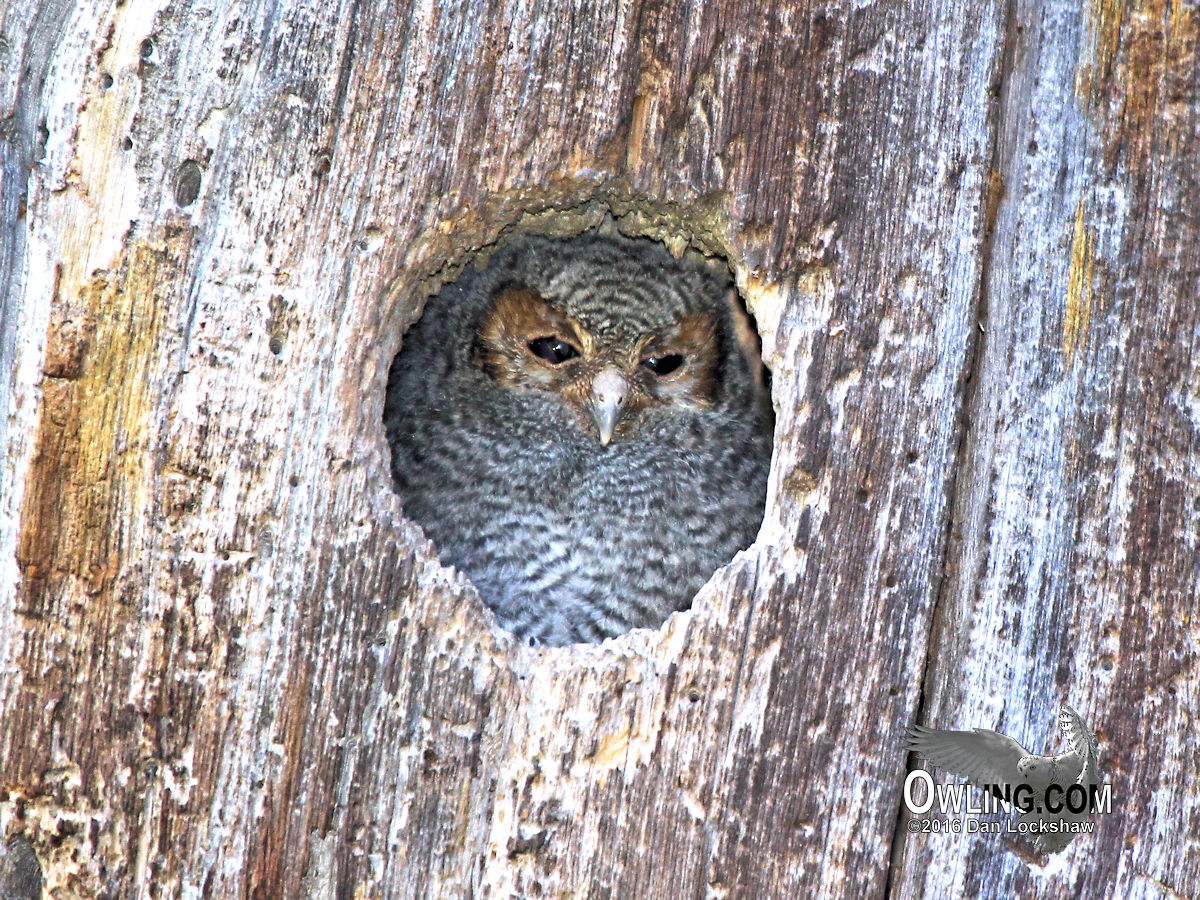Flammulated Owl Biology
A Reference for North and Central American Owls
Name: Flammulated Owl – Psiloscops flammeolus
Other Common Names: Flammulated Screech-Owl; Flammulated Scops Owl.
Subspecies: There is only one recognized race of Flammulated Owl. There are several races described although they have not been verified. Some of these that may come about are: the longer winged population in the north part of the range, separated as idahoensis, darker birds from Guatemala as rarus, (winter specimen thus invalid), meridionalis from S. Mexico and Guatemala, frontalis from Colorado and borealis from C. British Columbia to N. E. California. Flammulated differs from others of the genus Otus, in that it is lacking a typical trill song.
Measurements and Weights:
Wingspan: 14 – 19 in.
Length: 6 – 7 in.
Tail: 2 1/4 in.
Average Weight: Male: 1.9 oz.
Average Weight: Female: 2.0 oz.
Description: This is North America’s smallest eared owl (same length as the Pygmy-Owl and weighs less). There are two morphs, gray-brown and rufous but there are many intermediate forms. The coloration is often individual although in general the gray morph is in the northern portion of its range and rufous morph is in its southern range. The Flammulated Owl is the only small owl with dark blackish-brown eyes (all other small owls have yellow iris), making it very distinctive. The facial disk is pale gray with rusty brown around the eyes, boldest between the eye and white eyebrows that start at the bill and wrap around into the forehead. This makes the eyes look deep inset into the facial disk. The chest is light-gray with deep-brown or black streaks, a splash of cross barring and dark mottling with intermittent rust along the chest. The backside is darker grays and browns, mottled with grayish-horn to gray-brown. In the red phase the grays are largely replaced with a rusty rufous. The sexes are alike. The ear tufts are smaller than in the Screech-Owls (the Screech-Owls were formerly classified in the genus Otus with the Flammulated Owl).
Young: The upper parts of the juvenile are barred with gray and dusky. The under parts have a dull white or grayish-white base barred with a rusty-gray or grayish-rust color.




